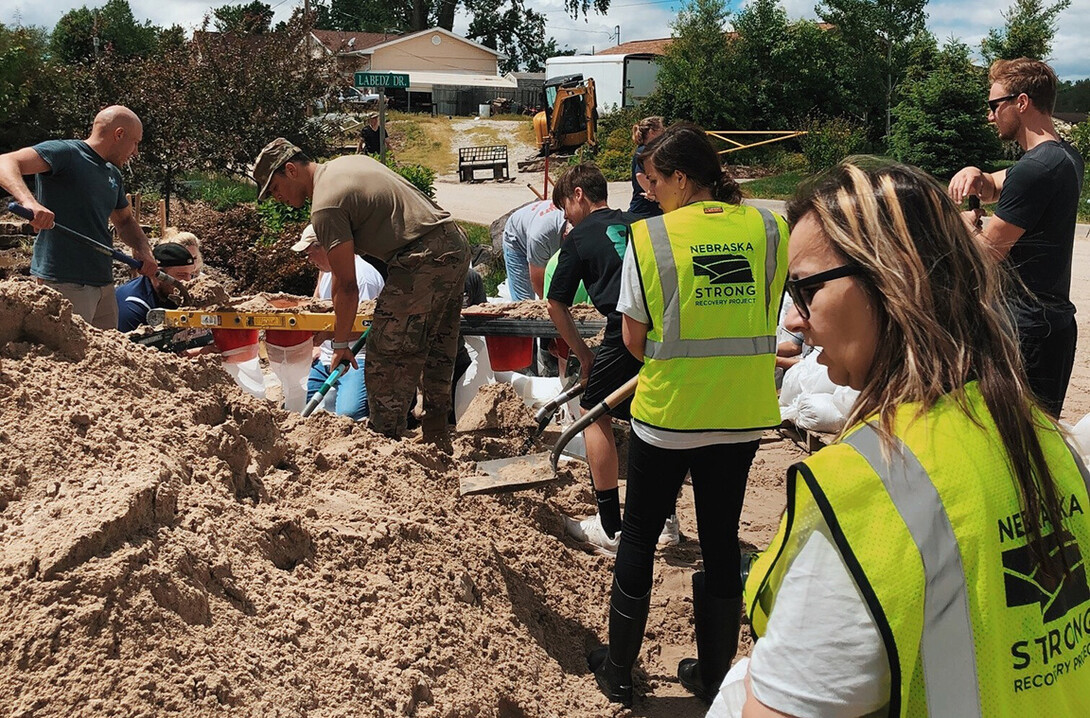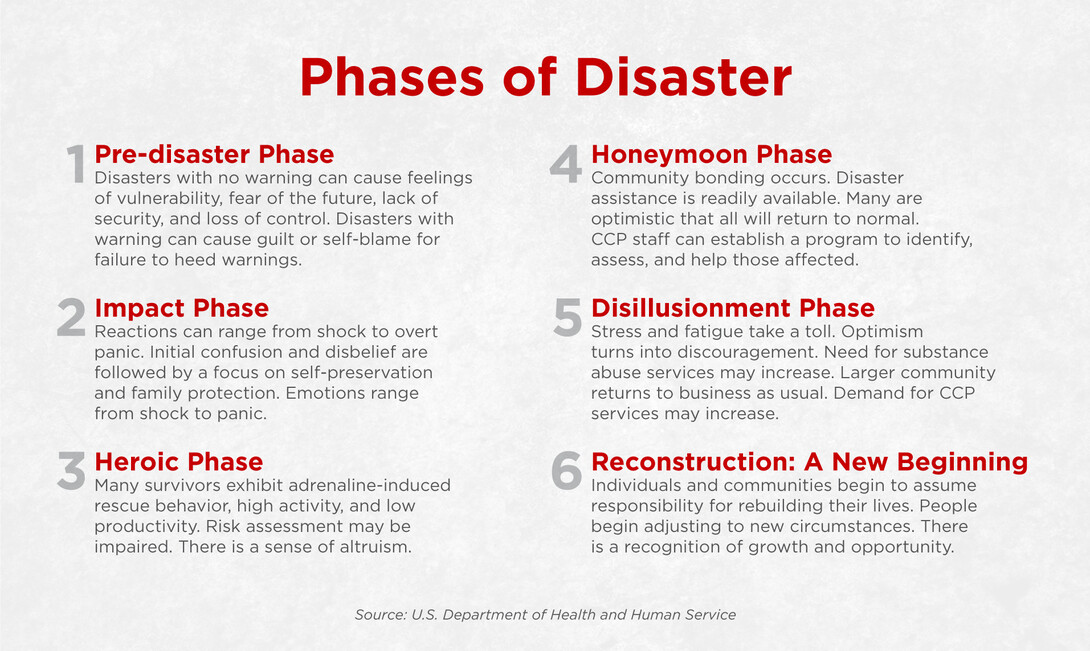
In the days and weeks following the historic March 2019 flooding that impacted much of Nebraska, University of Nebraska Public Policy Center experts in disaster preparedness and response worked with local agencies to organize behavioral health outreach in affected counties, and serving as liaisons between local and state government agencies.
But as the flood waters receded and the damage was assessed, the Public Policy Center also turned its expertise toward the long road to recovery, and guided the Nebraska Strong Recovery Project.

The flood recovery project received more than $2.5 million in federal grant dollars beginning in April 2019 to train outreach counselors to help Nebraskans recover from the emotional toll of the disaster, which helped augment mental health professionals with staff trained in psychological first aid in communities across Nebraska. It was a collaboration of the Public Policy Center, Nebraska Department of Health and Human Services, Nebraska Emergency Management Agency and four of the state’s six behavioral health regions.
Initially, 60 outreach counselors were identified in the behavioral health regions, hired and trained. Aside from making one-to-one contacts with people, they attended community events where they spoke with community members and handed out educational materials on recognizing the phases of disaster and where to find resources and help. They also held their own public education events. Over the first year, 239 events were held, which reached more than 3,800 Nebraskans.
At the time, Denise Bulling, senior research director at PPC, said outreach counselors would play an important role in helping residents cope with the overwhelming disaster. Counselors were trained in recognizing the phases of disaster, and how to individuals work through them.
“These counselors are members of the community who work with survivors and organizations to help support individuals and communities as they experience the highs and lows of recovery,” Bulling said in May 2019. “They talk with survivors, listen to their stories, and help them problem solve and connect them to resources.
“Once people understand the phases of disaster, and what the common reactions are, they’re able to put their own reactions in perspective and realize what they’re experiencing is common and that there are ways to cope with the stress of recovery. When you’re in the middle of it, it’s hard to see and recognize it. These outreach workers help them understand what they’re going through and give them some tools to help cope and move forward.”

Researchers at the Public Policy also tracked the success of the program. During the 2019-2020 flood response program, more than 123,000 Nebraskans were impacted by the program, with 39,716 receiving direct services, and 83,943 receiving education materials. Services initially reached 28 counties and the Santee Sioux Nation (prior to the expansion of the program during the COVID-19 pandemic). It was utilized most in Cass, Dodge, Douglas, Sarpy and Washington counties.
As the program was wrapping up in spring 2020, the COVID-19 pandemic began upending life in the United States, with shutdowns declared in Nebraska and elsewhere only a year after flooding struck the state. An infusion of $6.7 million in new federal grants was made to focus on COVID-19 pandemic, and expanded the program to every county in the state. The pandemic shifted the types of programming outreach counselors could do, said Stacey Hoffman, senior research manager at PPC, but they found creative ways to continue serving in their communities.
“Outreach workers worked with nursing homes and daycare facilities to interact with residents by writing messages and playing games on windows using special markers,” Hoffman said. “We moved group counseling ‘coffee socials’ to virtual sessions. Program staff wrote ‘thank you’ and ‘thinking of you’ cards to first responders, particularly healthcare workers.
“They also showed support by placing hand-made and printed yard signs throughout communities in Nebraska. Program brochures were mailed to libraries and schools for distribution, as well as to food banks and grocery stores to be included with individual deliveries and pick-ups.”
The grant ended officially Dec. 26, 2021, and was able to assist Nebraskans through two major disasters. Researchers at PPC and Nebraska HHS are still quantifying the final numbers, but Hoffman said having the program in place during the flooding and COVID-19 made a difference in the state, and made Nebraskans aware of mental health resources in their area.
“When we received funding for a COVID-19 related program, program staff found they had an easier time providing services in counties that were part of the flood program, as people in those areas were already familiar with Nebraska Strong,” Hoffman said.
While the grant has ended, Hoffman said the six behavioral health regions continue to maintain disaster response capabilities and outreach in the communities they serve. The Nebraska Family Helpline (1-888-866-8660) and Rural Response Hotline (1-800-464-0258), which were both promoted by the Nebraska Strong Recovery Project, are also still available for utilization by any Nebraskan needing help.







